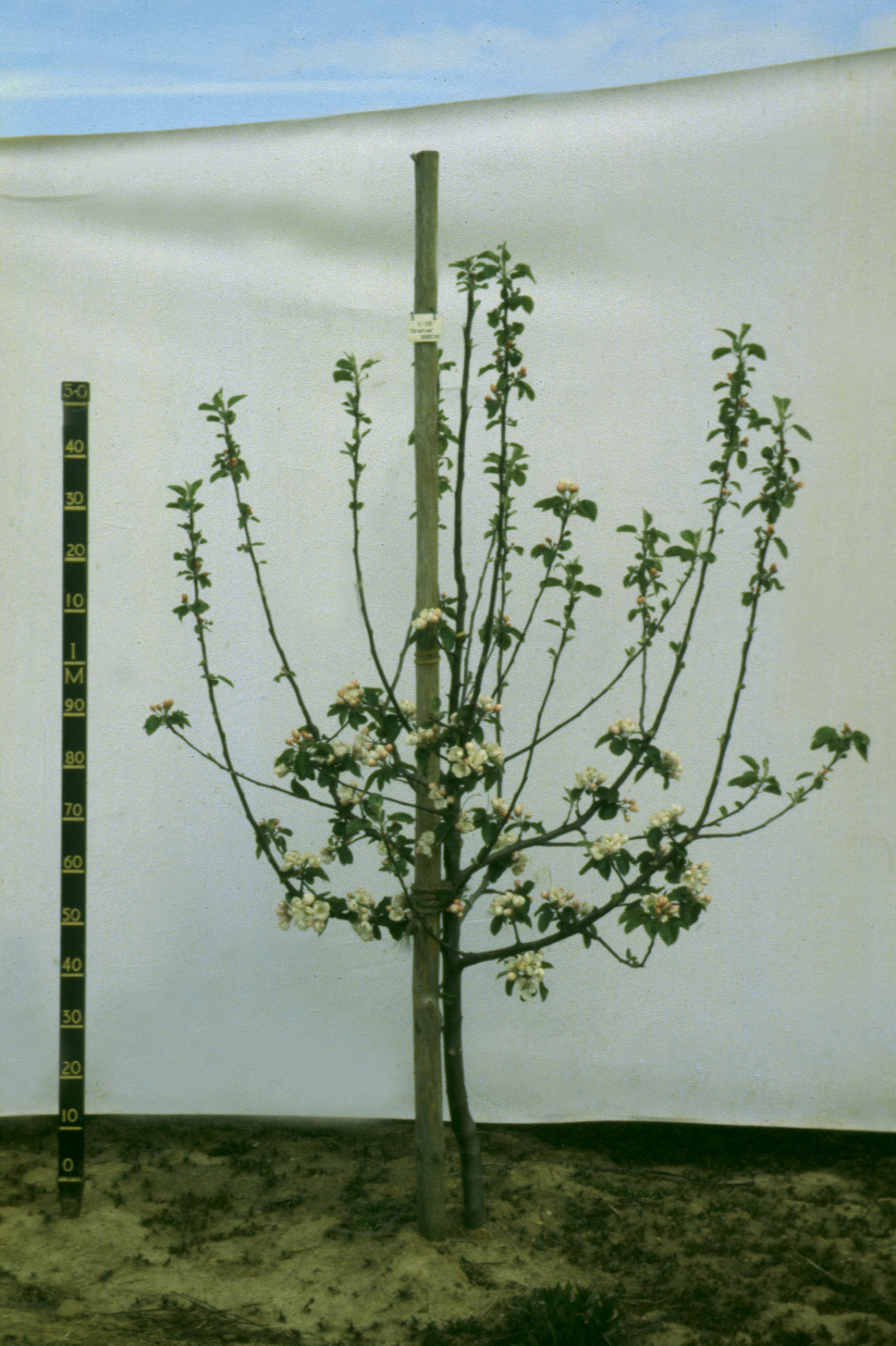Research conducted largely at HRI-East Malling in the 1980s showed the importance of planting high quality trees in increasing flowering in the first few years following planting.
 |
| A well feathered two-year old Bramley tree |
- Tree quality is generally measured in terms of tree height and the numbers of feathers (lateral branches) present on the tree at the time of planting. Trees with six to eight strong feathers with wide branch angles are ideal.
- Another tree quality factor, sometimes ignored, is the health status of the tree. Flowers formed on well-managed healthy trees are invariably of higher quality than those on diseased or poorly nourished trees.
- Some virus infections will have a negative influence on flower quality and fruit set. Wherever possible, trees of high health status (especially virus freedom) should be chosen.
- Trees planted as ‘whips’, with a single leader and few or no feathers, take a minimum of one year longer to begin flowering significantly following planting and are not recommended.
- In contrast, maiden trees with 6 to 8 good feathers (lateral branches) at the time of planting begin to flower in the second year (leaf) following planting and by the third year can be producing worthwhile crops.
- The first flowers produced on poor quality trees are formed only in the axillaries of the leaves on one-year-old extension shoots and, as such, are usually of poor quality.
- On well-feathered trees, the production of high quality flowers on spurs or short terminal shoots on two-year-old or older wood is achieved sooner following planting.
- The onset of flowering is advanced and the abundance and quality of flowers improved if well-feathered trees are planted in good fertile soils.
- It is also important that these relatively large trees receive good management to minimise the transplanting check to growth. Excessive transplanting check to growth will cause tree stunting and may lead to the production of branches with bare wood. The use of ‘knip’ trees (see below) will encourage early fruiting and significant yields can be achieved in the second leaf after planting.
